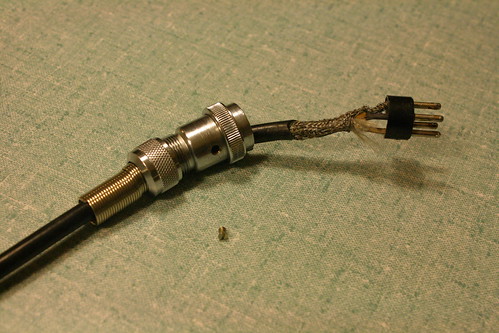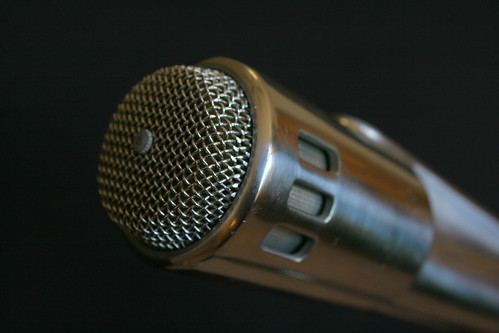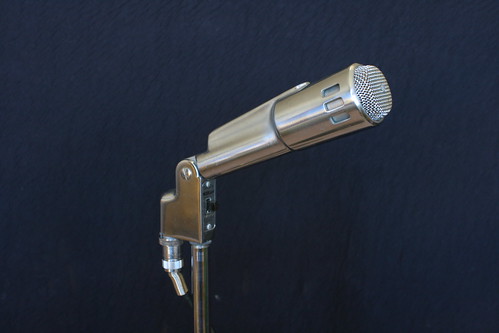Electro-Voice 664 Dynamic Microphone
I got this cool old microphone in for some minor repair. It's a classy-looking art-deco kind of mic from the 1950s and 60s, with a very durable chrome finish.

Electro-Voice Model 664 - four pin connector at the mic end.
This one is in really good condition, complete with a solid cable (I don't think it's the original). I soldered a modern XLR connector on the end. It appears they usually came with a 1/4" phone plug. It can be set for high impedance or low impedance (150 ohms) by swapping the white wire in the four-pin Amphenol connector at the mic end. It was originally set for high impedance, which is likely most suitable for plugging into a guitar amp. I tried the mic out that way, plugged into my Allen & Heath console, and it didn't sound very good. It was a little tinny (using my voice as a source), and there was significant noise being picked up. High impedance sources are much more susceptible to picking up electromagnetic interference.

Electro-Voice Model 664 Dynamic Mic
So I swapped the white wire from pin 2 to pin 3 at the mic end. The instructions talk about pulling the "slip pin" out to effect this change, but this connector had the wire soldered into the pin. After the swap, it sounded way better, and the noise was gone. I pulled out a little 1 kHz and boosted about 120 Hz a little, and it sounded pretty good on voice. Looking at the frequency response, this mic really rolls off the low frequencies in order to reduce the proximity effect. The response curve from the data sheet shows 100 Hz to be 5 dB down compared to 1 kHz, so I guess I'm levelling that off a little.

There is more information on Recording Hacks, and some great pics and the engineering data sheet on Coutant's website. Read some background on the Variable-D design on ProSoundWeb and EV's website.
I've got a bunch of pics on my flickr. This is such a groovy looking mic, it's too bad I have to give it back to the owner!!
Ribbon Mike Restoration
Here's an interesting article about the guy who restored my RCA BK-5A:
More on the Bluegrass Mike Technique
Recently, I had the opportunity to use an Audio-Technica AT4050 large diaphragm, multi-pattern condenser microphone as a single-mike at a bluegrass concert. I switched it to cardioid and it sounded really great - probably my favourite so far. Everything was so clean and clear. The vocals (a group of women), and all of the instruments (guitar, mandolin, fiddle, autoharp, penny whistle) sounded perfectly natural. I had the upright bass plugged in which helped fill out the bottom end. It was noticeably missing when I tried turning off the bass channel. I used two matched Oktava MK-012 small diaphragm condensers for side mikes, and they worked great. I used them with hypercardioid capsules. The mandolin and one acoustic guitar used them for instrumental breaks.
In the past I have used:
AT3035 - it's a fairly cheap mike, but sounds pretty decent for the money.
Rode K2 tube mike - sounded really good with a variety of voices and instruments.
AKG 414 - also very good.
Rode NT1000 - pretty decent.
They all work pretty well, but they each have a slightly different characteristic.
